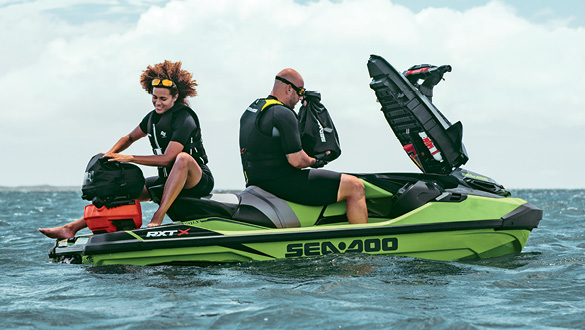Off-watercraft, such as personal watercraft (PWC), jet skis, and small boats, are designed to handle a variety of water conditions. However, their performance can vary significantly depending on the type of water they’re operating in.
Understanding how these vessels perform in different conditions can help users make informed decisions about which craft to use and how to navigate safely. In this blog, let’s explore how sea doo watercraft handle calm, choppy, and rough water conditions.
1. Calm Water Conditions
In calm water, off-watercraft exhibit their best performance, offering smooth, efficient operation. This environment typically includes lakes, slow-moving rivers, and sheltered bays.
- Personal Watercraft (PWC): PWCs thrive in calm water due to their stability and agility. The smooth surface allows for higher speeds and better handling. Riders can easily manoeuvre sharp turns, making calm conditions ideal for recreational activities like tubing or wakeboarding.
- Jet Skis: Similar to PWCs, jet skis are designed for speed and manoeuvrability. On calm water, jet skis can reach their maximum speed, providing a thrilling experience. Their ability to carve through the water with precision is enhanced when the surface is flat.
- Small Boats: Small boats, including fishing boats and recreational dinghies, perform optimally in calm water. They offer a steady ride, making activities like fishing or leisurely cruising more enjoyable. The lack of turbulence means less strain on the engine and reduced risk of capsizing.
2. Choppy Water Conditions
Choppy water conditions, characterised by small waves and uneven surfaces, can be challenging for off-watercraft. These conditions are common in coastal areas and on large lakes with moderate winds.
- Personal Watercraft (PWC): In choppy water, PWCs may experience a less smooth ride. The vessel’s hull is designed to cut through water, but in rougher conditions, riders might feel more bumps and jolts. Manoeuvrability can be slightly reduced, and riders should adjust their speed to maintain control and avoid excessive bouncing.
- Jet Skis: Jet skis, with their jet propulsion systems, handle choppy water better than some traditional boats. However, they can still be affected by rough waves, leading to a more jarring experience. The key to handling choppy conditions is to maintain a steady speed and adjust your course to minimise the impact of waves.
- Small Boats: For small boats, choppy water can create a bumpy and uncomfortable ride. The vessel’s stability is compromised, and passengers might experience more pitching and rolling. To navigate effectively, boat operators should reduce speed and head into the waves at a slight angle to minimise impact.
3. Rough Water Conditions
Rough water conditions, including high waves, strong currents, and stormy weather, present the most significant challenges for off-watercraft. Safety is paramount in these conditions.
- Personal Watercraft (PWC): In rough water, sea doo can become unstable and difficult to handle. The risk of capsizing increases, and the ride can become very uncomfortable. Riders should avoid operating in such conditions and wait for calmer weather to ensure safety.
- Jet Skis: Jet skis are generally more robust in rough conditions compared to PWCs but still face challenges. High waves can impact the jet ski’s stability and control. It’s essential to navigate slowly and carefully, avoiding large waves when possible. Advanced riders with experience in rough conditions may handle these situations better, but caution is always advised.
- Small Boats: Small boats are particularly vulnerable in rough water. High waves and strong currents can make steering difficult and increase the risk of capsizing. Operators should avoid venturing out in severe conditions and ensure their boat is equipped with appropriate safety gear, including life jackets and emergency communication devices.
Safety Tips for All Conditions
Regardless of water conditions, safety should always be a priority. Here are some essential tips for operating off-watercraft:
- Check Weather Conditions: Before heading out, check the weather forecast and be aware of any potential changes. Avoid going out in severe weather or if conditions are expected to worsen.
- Wear Safety Gear: Always wear a life jacket and ensure that all passengers do the same. This is crucial in case of emergencies, especially in rough water conditions.
- Maintain Your Craft: Regular maintenance of your off-watercraft ensures that it performs optimally and safely across different conditions. Regularly inspect the engine, hull, and safety equipment.
- Understand Your Craft: Familiarise yourself with how your specific off-watercraft handles different conditions. Practice in calm conditions to build confidence before attempting more challenging waters.
Final Words
Off-watercraft can offer an exhilarating experience across various water conditions, but their performance can significantly differ depending on the environment. By understanding how these vessels react to calm, choppy, and rough water, users can make safer and more informed decisions. Always prioritise safety and be prepared for changing conditions to ensure a safe and enjoyable sea doo experience on the water.

